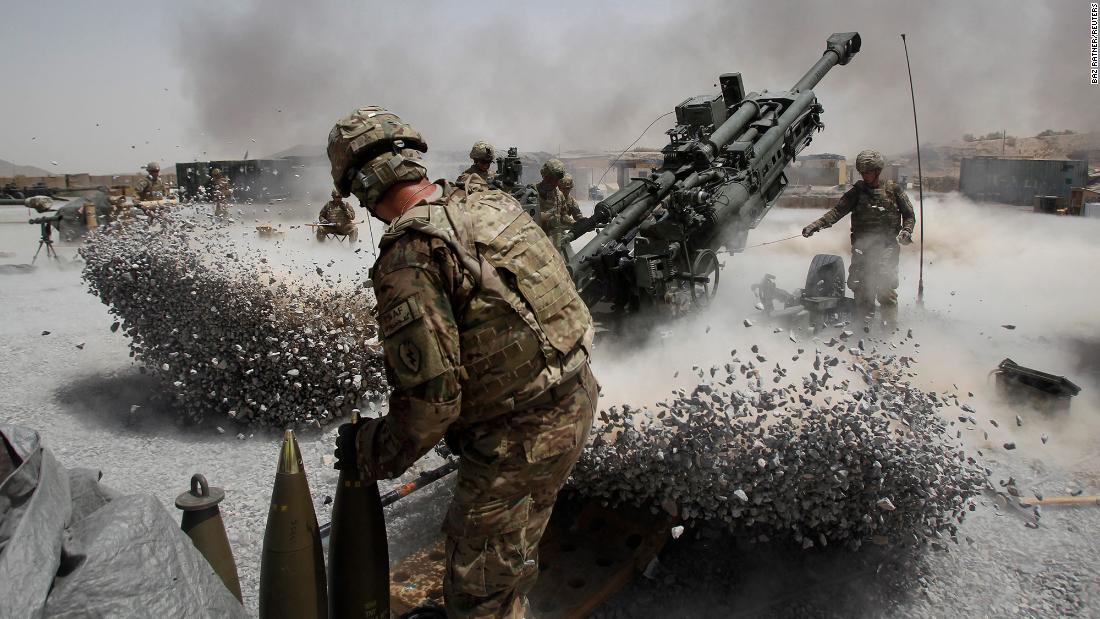Afghanistan is in turmoil.
Videos have surfaced depicting Afghan civilians falling from planes at the airport in the country’s capital of Kabul after crowding the tarmac in attempts to flee as the Taliban takeover.
The Taliban, eleven days ago, controlled less than half the number of districts it rules today, and now they also threaten ‘consequences’ if the United States delays the withdrawal deadline of Aug. 31, just one week away.
Such a swift rise of tension, tragedy, and Taliban beg the questions how it came to this and what comes next?
Knowing more about the Taliban is necessary to answer either question.
“In fall 1996, the Taliban seized Kabul and declared Afghanistan an Islamic emirate,” Derek Hawkins wrote for a Washington Post article. “Taliban rule was brutal and repressive. Women had virtually no rights.”
The picture stayed relatively the same until the 9/11 terrorist attacks that got America’s attention five years later in 2001. However, it was not the Taliban but al-Qaeda that led these attacks.
“The Taliban’s ideology was similar to that of its counterpart al-Qaeda, though its interests were limited to ruling Afghanistan,” Hawkins wrote.
Today’s Taliban officials seem to affirm this idea. Maybe.
“Taliban officials insist that they will fully adhere to the US deal and prevent any group from using Afghan soil as a base for attacks against the US and its allies,” bbc.com writes in an article. “But many analysts say the Taliban and al-Qaeda are inseparable.”
If the two groups are indeed close-knit, Afghanistan may begin to look as it did it 2001 when the Taliban offered al-Qaeda sanctuary and prompted a response from the United States.
According to cfr.org, who has a lengthy timeline on the war, “Bush eventually called out the Taliban regime to “deliver to the United States authorities all the leaders of al-Qaeda who hide in your land,” or share in their fate.”
So began the war on terror and the hunt for al-Qaeda and 9/11 leader, Osama bin Laden, who would later be killed under Obama’s presidency.
Obama doubled down on Afghanistan in 2009, committing 17,000 more troops to the warzone.
“Having gotten those, [top generals then] asked for an additional 40,000 to try to weaken the Taliban and strengthen the Afghan government,” Andrew Prokop wrote in an article for vox.com.
The then-Vice President Joe Biden reportedly disagreed according to Bob Woodward’s 2010 book Obama’s Wars, which was largely relied upon in Prokop’s article.
“Biden was consistently one of the biggest skeptics of the military’s strategies,” Prokop wrote. “With tens of thousands of troops on the ground already, if we can’t do it with this number… it seems irresponsible to inject additional troops on top of that. We’re just prolonging failure at that point, [Biden] said.”
As the year went on it seemed Biden may have been on to something.
“Biden diagnosed the problems well… but though his logic arguably pointed toward a withdrawal of troops in the near future, he didn’t argue for that – it simply seemed too unpalatable,” Prokop wrote.
According to cfr.org, shortly after Osama bin Laden was killed in 2011, Obama announced a troop drawdown. However, due to the rise and fall of tensions, it was not until February 2020 and Donald Trump’s presidency that a full withdrawal was agreed upon, with a deadline of May 1, 2021.
On April 14, 2021, Joe Biden extended that time to September 11.
As the deadline creeped closer, the CIA began to warn U.S. officials of an impending collapse.
According to an article by nbcnews.com, “In the end, the CIA’s description of what a worst-case scenario could look like “’was pretty close to what happened.’”
In fact, according to the BBC, who mapped out the advance of the Taliban forces in Afghanistan, on Aug. 13 the Taliban controlled 132 of 398 districts. Just three days later they controlled 391.
As highlighted by the nbcnews article with multiple quotes, it is uncertain whether or not Biden truly knew that this would happen.
What is perhaps a little more certain, are numbers.
According to a buzzfeed article recapping the war in numbers, “Brown University’s Costs of War project estimates that the full cost was $2.26 trillion.”
The war cost a lot of lives too.
“240,000: Approximate total deaths as a result of war in Afghanistan and Pakistan… More than 2.5 million: Afghan refugees at the end of 2020.”
Some refugees are headed to the United States and Oklahoma Gov. Kevin Stitt looks to welcome them.
According to okcfox.com, “Gov. Kevin Stitt released a statement saying… in part that he wants them to ‘live in the freedom we hold so dearly.’”
It seems that America’s longest war has finally come to an end.













Be First to Comment